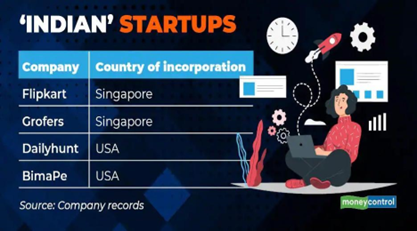Wednesday, 1st February 2023
NREGA Reforms - Edukemy Current Affairs
Exam view: MGNREGA, reforms required in the MGNREGA, Issue in NREGA
In News: In reforms to the National Rural Employment Guarantee Act, an administrative and fiscal efficacy-alone focus would be a flaw.
The Mahatma Gandhi National Rural Employment Guarantee Act was passed in 2005 and aims to enhance livelihood security in rural areas by providing at least 100 days of guaranteed wage employment in a financial year to every household whose adult members volunteer to do unskilled manual work.
It is shared between the Centre and the States. There are currently 15.51 crore active workers enrolled under the scheme.
Recently, the Central government has constituted a committee to review the implementation of the MGNREGA scheme, especially to assess the programme’s efficacy as a poverty alleviation tool. The committee, headed by former Rural Development secretary Amarjeet Sinha, had its first meeting in November 2022 and has been given three months to submit its suggestions.
The most recent concern of the central government is over the programme’s “regressive” spending pattern, where poorer States spend less NREGA funds than better-off ones.
Address Violation of the Entitlements:
- Delay in wage payments: It is required to restore the faith of workers in the programme. Even after the Supreme Court's direction , there has not been even a single decisive step taken by the Ministry. There is a complex payment system where seven or more functionaries have to sign off before payment due to a worker can be approved (stage one of the wage payment cycle).
- Strengthen Implementation capacities: We need to strengthen the implementation capacities where expenditure is low instead of curbing expenditure where employment generation is high. States which are spending more are implementing the programme better because they have better capacities (as several studies including the government’s own Economic Survey concluded in 2016). There has to be a focus on exclusion and not inclusion “errors”.
- The online Management Information System of NREGA can flag areas where entitlements are violated instead of being used as a tool by bureaucrats to centralise and control things.

- Demand-based Programme: Need to run the programme like a demand-based law and not a scheme. Intermittent and unpredictable fund releases by the central government are one of the fundamental reasons why State governments are unable to ensure the full potential of NREGA.
- Participatory Reforms: Make discussions on any proposed reforms participatory. NREGA emerged from the demands of a vibrant peoples’ movement across India and its cornerstones have been its path-breaking provisions for public accountability. Building on the spirit of public participation, which gave NREGA an institutional architecture that was well before its time, is needed.
- Top-Down Reforms: It is time the Government of India makes an earnest attempt to map the impact of each of its “reforms” on access to and the expenditure of NREGA, particularly in poorer States. A slew of “reforms” — the majority have focused on centralisation such as the electronic fund management system, geo-tagging of assets and a national mobile monitoring system (NMMS) — have disrupted implementation. The central government must be held accountable for the denial of entitlements to NREGA workers as a result of top-down “reforms” that workers had no say in designing.
|
Bihar Case Study |
|
The Kaam Mango Abhiyan was launched by the Ministry of Rural Development in 2013 — due to the declining demand for work under NREGA), the Union Ministry of Rural Development launched this campaign, which literally means “ask for work” — with the help of civil society organisations in six districts in six States; 53,000 workers demanded work in Katihar district alone and dated receipts were provided. Unfortunately, the historic numbers of workers demanding work were let down by the Ministry because funds to honour the demand were not released to States in time. Given the unique financial needs of this programme, the General Financial Rules need to be reimagined so that budgetary allocations remain flexible to the need for funds by States in response to demands for work. |
Reforms to NREGA must prioritise workers' access to entitlements with ease and dignity, rather than focus on administrative and fiscal efficacy alone.
https://www.thehindu.com/opinion/lead/in-nrega-reforms-prioritise-the-worker-and-her-dues/article66447362.ece
IPR SENSITIVITY vs PUBLIC HEALTH
In News
Intellectual Property Rights (IPRs) sensitivity has been under fire for being pro-patentee and conducive to evergreen patenting at the expense of public health obligations.

About the News
There are four stakeholders under the Indian Patents Act, 1970 and its subsequent amendments — the society, government, patentees, and their competitors.
- Each of these stakeholders has rights under the statute. Economic assumptions behind such IP legislations are –
- Society is the intended beneficiary of the quid pro quo underlying the Patents Act, better known as “the Patent Bargain”.
- Patent monopolies are granted to innovators in the hope that they disclose something inventive and of industrial value to the public which the public may use without the need for a license from the patentee after the expiry of the patent monopoly.
- It is expected to trigger innovation-driven competition between market players which results in increasing the basket of quality options for the consuming public.
- Society is the intended beneficiary of the quid pro quo underlying the Patents Act, better known as “the Patent Bargain”.
- When such legislations are interpreted, applied, and enforced to the exclusive benefit of patentees, and that too evergreening patentees, the rights of other stakeholders are abridged.
- Bharat needs to add layers to its IPR ecosystem to attract investment under schemes like “Make in India”.
- But IPR-sensitivity can not give way to a pro-patentee position at the expense of public health obligations and long-term national interest under “Atmanirbhar Bharat”.
What is the National IPR Policy?
- The document was released in 2016 by the then Department of Industrial Policy and Promotion (now Department for Promotion of Industry and Internal Trade) under the Ministry of Commerce.
- It provided a framework to the government’s vision for an IPR ecosystem in the country.

How did the Policy change the IPR ecosystem in India?
- Structural changes
- The Intellectual Property Appellate Board (IPAB) was dissolved in 2021 as part of tribunal reforms, and its jurisdiction was re-transferred to high courts.
- Establishment of dedicated IP benches by the Delhi High Court. This is the country’s leading court on the IPR front, for speedier disposal of IPR disputes.
- Improved infrastructure and strength of the Indian Patent Office.
- Legislative safeguards
- India’s decision to grant product patents for 20 years for “substances intended for use or capable of being used as food, or as medicine or drug”.
- Provisions such as Sections 3(d), 53(4), and 107A of the Patents Act were expressly introduced between 2002 and 2005 to prevent the mischievous practice of “evergreening” of patents, which pharmaceutical “innovator” companies had successfully resorted to in patentee-friendly jurisdictions such as the United States.
- Supreme Court (SC) verdict in Novartis AG v. Union of India (UoI) & Others (2013) further shed light on the intent behind Section 3(d) in the Patents Act, which is to prevent the evergreening of a patent monopoly on a drug by making inconsequential additions or changes that in no way enhance the drug’s therapeutic efficacy.
How has the IPR ecosystem failed to protect public health in India?
- Despite Section 3(d), “Evergreening patents” on drugs continue to be granted by the Indian Patent Office.
- Some of these relate to the treatment of diabetes, cancers, cardiovascular diseases and other serious conditions.
- These evergreening patents are regularly enforced through courts at the expense of the statutory rights of generic manufacturers and to the detriment of patients.
- Non-application of SC’s verdict in Novartis AG v. UoI & Others.
- This delays the entry of generic versions of off-patent drugs.
- This affects the availability of affordable medicines to patients in a lower middle-income country such as Bharat, where Out-of-Pocket expenditure on medical expenses can push middle-income families to abject poverty.
Source:
https://indianexpress.com/article/opinion/columns/enforcing-the-patent-bargain-intellectual-property-rights-sensitivity-should-not-be-at-the-expense-of-public-health-obligations-8411757/
FLIPPING START-UPS - Edukemy Current Affairs
In News
According to the Economic Survey Report 2022-23, the Indian startup ecosystem is facing several challenges despite recording an increase in the number of startups between 2016 and 2022.
About the News
As per the report, Startups are the messengers of India’s entrepreneurial dynamism. Yet, there are many challenges that Indian start-ups face such as.

- Funding,
- Revenue generation struggles,
- Lack of access to supportive infrastructure,
- Regulatory environment and
- Tax structures.
- To circumvent these challenges, many of these companies are Flipping.
What is Flipping?
Flipping is the process of transferring the entire ownership of an Indian company to an overseas entity, including the transfer of all Intellectual Property and data owned by the Indian company.
- Flipping usually happens at the early stage of the startup.
- It can be reversed by engaging collaboration with government-related regulatory bodies and other stakeholders.
- Companies are also exploring ‘reverse flipping’.
What can cause reverse flipping of start-ups back to India?
 While flipping was prevalent, the survey showed that the process was slowing down and reverse flipping was underway but more needs to be done.
While flipping was prevalent, the survey showed that the process was slowing down and reverse flipping was underway but more needs to be done.
- Easing corporate laws to make them conducive,
- Improving collaborations with private entities to set up mentorship platforms,
- Tapping into emerging fields.
What are the current accomplishments of Start-ups in India?
As per the Economic Survey 2022-23 –
- Startups have created more than 9,00,000 direct jobs.
- India has recorded a 64% increase in the average number of new jobs in 2022 relative to the last three years.
- Tier 2 and 3 cities are emerging as hotspots, as they are home to about 48% of our startups.
- They encourage the youth to be job creators rather than job seekers.
- India has some 1,000 agritech startups. The sector has seen a spike in private equity investments over the past four years, recording an increase of more than 50 percent per year.
- More than 500 startups are working in the millet value chains. The year 2023 has been declared as the International Year of Millets.
- Startups and e-commerce players with Unified Payment Interface (UPI) have provided innovative solutions for customer experience.
- Companies like Google, WhatsApp, Walmart, True caller, Amazon, Uber, and others are providing UPI services.
- UPI-based transactions grew in value and volume to 121% and 115% respectively.
- Hyderabad-based Skyroot Aerospace scripted history by becoming the first private Indian organisation to launch a rocket from Indian Space Research Organisation’s launchpad in Sriharikota.
- Centre’s 2020 decision to open up the space sector to private players led to this achievement.
- However, the space sector will expand for private players when the government becomes the anchor customer by procuring rockets and satellites.
- The government of India expects new economic opportunities to come up for start-ups with the rollout of 5G services.
- It could spur innovations by start-ups and advance the Centre’s ‘Digital India’ vision.
Source:
https://www.downtoearth.org.in/news/governance/economic-survey-2022-23-indian-startup-ecosystem-faces-several-challenges-causing-companies-to-flip--87400
Carbon dioxide removal (CDR) - Edukemy Current Affairs
In News:
- Environmentalists stress the need for Carbon dioxide removal technology for the next decade to mitigate environmental concerns.
About the News:
- Carbon dioxide removal, or CDR, is widely recognized as essential for attaining climate goals.
- The Intergovernmental Panel on Climate Change (IPCC), in its latest report, included 541 pathways that can limit global temperature rise to 1.5 degrees Celcius or 2°C with almost all of these pathways involving some degree of CDR.
- Scaling of CDR also referred to as ‘negative emissions,’ is an effective way to attain the temperature goals set by the Paris Agreement.
Major Findings:
- Currently, 2 billion tonnes of CO2 per year is being removed globally, 9% from conventional methods and 0.1% from novel methods.
- Next decade is crucial for novel CDR as deployment required in the second half of the century will only be feasible if substantial deployment occurs in the next 10 years.
- Innovation in CDR is growing, with governments investing in public R&D and funding totaling $4.1 billion between 2010-2022.
- Gap between CDR planned by countries and CO2 removal required to fulfill the Paris temperature goal is already emerging by 2030.
- Examples of focused governance for CDR are mostly at the national and EU level while the UNFCCC and other multilateral organizations have yet to make significant recommendations.
Carbon dioxide removal (CDR):
- Carbon dioxide removal (CDR) involves capturing carbon dioxide from the atmosphere and storing it for extended periods of time.

- There are two ways of removing carbon dioxide:
- Conventional method: Involves land management through afforestation and reforestation.
- Novel CDR methods: Involves storing captured carbon in geological formations, oceans, or manufactured products like biochar which includes methods such as:
- Bioenergy with Carbon Capture and Storage (BECCS)
- Direct Air Capture with Carbon Capture and Storage (DACCS)
Need for CDR:
- To mitigate the impacts of climate change and reduce greenhouse gas concentrations in the atmosphere.
- The burning of fossil fuels, deforestation, and other human activities have led to a significant increase in atmospheric CO2 concentrations, which are contributing to global warming and other adverse impacts on the climate.
- Mitigating emissions through reducing consumption and transitioning to clean energy sources is crucial, but it may not be sufficient to limit global warming to safe levels.
- To avoid the most dangerous impacts of climate change, it may be necessary to remove and store CO2 from the atmosphere on a large scale.
Challenges of CDR:
- CDR technologies are seen as a crucial component of efforts to achieve net-zero emissions, as they can help to balance out residual emissions from industries that are difficult to decarbonize.
- CDR technologies involve high cost and scalability of the available technologies.
- Currently, most CDR methods are still in the experimental stage and have limited capacity for large-scale deployment.
- There is fear and apprehension about the potential for unintended environmental consequences, such as the disruption of ecosystems or soil degradation, as a result of large-scale CDR activities.
- There is also the risk of carbon dioxide being released back into the atmosphere, which would undermine the effectiveness of CDR efforts.
- CDR is not a substitute for reducing emissions in the first place, as the majority of emissions come from human activities such as the burning of fossil fuels, deforestation, and industrial processes.
- The development and deployment of CDR technologies will require significant investment, political will, and international collaboration.
https://www.downtoearth.org.in/blog/climate-change/carbon-dioxide-removal-how-crucial-is-the-next-decade-for-this-novel-technology-87322
ADVISORY TO TELECAST “PUBLIC SERVICE CONTENT”
In news
- Ministry of Information and Broadcasting issued new obligatory norms mandating all TV channels to include a 30-minute daily public service content in their programs under “Guidelines for Uplinking and Downlinking of Television Channels in India, 2022”.
About

New Advisory
- The channels have to include a 30-minute daily public service content which can also be broadcasted in parts at different times in the day.
- It should not be telecasted between midnight and 6 a.m.
- A monthly report be submitted online on Broadcast Sewa Portal.
- TV channels can share content and repeat telecasts on one or several television channels.
- It mandates the creation of a common e-platform as a repository of relevant videos or textual content for various sources.
- As per the MIB, voluntary compliance and self-certification would be the guiding principles.
Public Content
- It is the content of national importance and social relevance.
- It includes education, literacy, agriculture, rural development, health and family welfare, the welfare of women and weaker sections of society, environmental protection and cultural heritage,
Compliance
- Foreign channels that only show programs in languages not listed in the Eight Schedule of the Indian Constitution will not have to follow these rules.
- Certain sports and religious channels need not submit monthly reports.
Guidelines for Uplinking and Downlinking of Television Channels in India, 2022
- New Guidelines ease compliance for Television Channels.
- No prior Permission for Live Telecast of Events.
- Indian Teleports may uplink Foreign Channels.
- Obligation to telecast content in National/Public Interest.
- The guidelines were updated after 11 years.
https://government.economictimes.indiatimes.com/news/governance/tv-channels-mandated-to-telecast-public-service-content-submit-compliance-report-on-broadcast-seva-portal/97470245
ANTI-LEPROSY DAY - Edukemy Current Affairs
In news
- World Leprosy Day is observed every year on the last Sunday of January.

About
- Leprosy is a neglected tropical disease (NTD) and a chronic infectious disease caused by a type of bacteria, Mycobacterium leprae.
- It is also called Hansen’s Disease.
- The bacteria are transmitted via droplets from the nose and mouth during close and frequent contact with untreated cases.
- It is curable with multidrug therapy (MDT).
- The disease affects the skin, the peripheral nerves, mucosa of the upper respiratory tract, and the eyes.
- Leprosy is curable and treatment in the early stages can prevent disability. Apart from physical deformity, persons affected by leprosy also face stigmatization and discrimination.
- In India, it is observed on 30th January every year, coinciding with the death anniversary of Mahatma Gandhi.
Trend in India
- Male members are more likely to be affected by leprosy as compared to females.
- Prevalence rate of leprosy has come down from 0.69/10,000 population (2014-15) to 0.45 (2021-22)
- Annual new case detection rate per 100,000 population has come down from 9.73 (2014-15) to 5.52 (2021-22)
Indian initiatives
- Sparsh Leprosy Awareness Campaign (SLAC)
- National Leprosy Eradication Programme (NLEP)
- The vaccine, known as Mycobacterium indicus pranii (MIP), has been developed by National Institute of Immunology.
https://pib.gov.in/PressReleasePage.aspx?PRID=1894687
Kawal Tiger reserve - Edukemy Current Affairs
Why in news? Recently, more than 340 birds of different species (including rare peregrine falcon) were enumerated in water bodies of Kawal Tiger Reserve during the Asian Water Bird Census 2023.

About:
- Kawal Tiger Reserve is located in the Telangana State along the banks of river Godavari, forming part of the Deccan peninsula-central highlands.
- The river Kadam (a tributary of Godavari) flows through this area.
- The government of India declared Kawal Wildlife Sanctuary to be a Tiger Reserve in 2012.
- Flora: Dry Deciduous Teak Forests mixed with Bamboo.
- Fauna: Mammal species that have been sighted include tiger, leopard, gaur, cheetal, sambar, nilgai, barking deer, chinkara, and sloth bear.
https://www.newindianexpress.com/states/telangana/2023/jan/29/rare-species-seen-during-asian-water-bird-survey-2023-in-kawal-reserve-2542340.html
World Economic Outlook Update - Edukemy Current Affairs
Why in news? In its January update of the World Economic Outlook (WEO) report, the IMF has marginally improved the forecast for global growth in 2023.
About:

- The International Monetary Fund (IMF) releases the WEO twice every year, in April and October, apart from updating it twice — in January and July.
Key findings
- World economy to grow 2.9% in 2023.
- Recession risks have subsided, and central banks are making progress in controlling inflation.
- India will stay the world’s fastest growing major economy in 2023 and 2024.
- Growth in India is set to decline from 6.8 percent in 2022 to 6.1 percent in 2023.
- Other reports by IMF: Global Financial Stability Report.
https://indianexpress.com/article/explained/explained-economics/imf-world-global-economy-outlook-india-key-takeaways-8414682/
AI-driven program - Edukemy Current Affairs
Why in news? Recently, The Indian Railways has concluded the trial of an Artificial Intelligence (AI) program it built to fix a perennial issue — long waiting lists for tickets.

About:
- Made by Railways’ in-house software arm Centre for Railway Information Systems (CRIS), this AI module, called Ideal Train Profile, was fed with information like how millions of passengers booked tickets on these trains, which origin-destination pairs were a hit, and which were flops at what time of the year, which seats remained vacant for what portion of a journey, etc.
- This project has been in the works for the past two years, wherein the AI has been “taught” ticket booking data and trends of the past few years.
- It has come up with the best possible combination of how many berths to keep for which sectors and at what time.
- The combination of “training data” the AI has been fed goes back three years.
- The AI does data-driven remote location selection, completely automates the process of quota distribution, and suggests optimal quotas for different ticket combinations based on historical demand.
https://indianexpress.com/article/explained/everyday-explainers/what-railways-ai-based-project-shorten-ticket-wait-lists-8404565/
Senna Spectabilis - Edukemy Current Affairs
Why in news? Recently, Kerala Forest Research Institute (KFRI) has come out with a management plan to eradicate Senna spectabilis, an exotic invasive plant.

About:
- Senna spectabilis (calceolaria shower) is a deciduous tree native to tropical areas of America.
- It grows up to 15 to 20 meters in a short period of time and distributes thousands of seeds after flowering.
- The thick foliage of the tree arrests the growth of other indigenous tree and grass species.
- It also adversely affects the germination and growth of the native species.
- It is categorized as ‘Least Concern’ under IUCN Red List.
- Spread areas include Nilgiri Biosphere Reserve (NBR), Bandipur, Nagarhole, Mudumalai, and Sathyamangalam tiger reserves, etc.
https://www.thehindu.com/news/national/kerala/plan-in-place-to-eradicate-invasive-plant-species-from-keralas-wildlife-habitat/article66450185.ece#:~:text=The%20Nodal%20Centre%20for%20Biological,to%20the%20State's%20wildlife%20hab
Caecilian Fossil - Edukemy Current Affairs
Why in news? Recently, A team of paleontologists discovered the first Triassic-era caecilian fossils.

About:
- These Caecilian fossils are the oldest discovered and extend the record of the small mammal by roughly 35 million years.
- The fossil has been named Funcusvermis gilmorei.
- Modern-day caecilians are amphibians with no limbs and cylindrical bodies with compact “bullet-shaped” skulls that let them burrow underground.
- They spend their lives burrowing in leaf litter or soil, searching for prey like worms and insects.
- The Triassic Period is the first period of the Mesozoic Era which marked the beginning of major changes; distribution of continents, evolution of life etc.
https://indianexpress.com/article/technology/triassic-fossils-caecilians-8405842/#:~:text=A%20team%20of%20palaeontologists%20have,fossils%20have%20been%20found%20before
XR Startup Program - Edukemy Current Affairs
Why in news? Recently, MeitY Startup Hub (MSH) and Meta have announced the list of 120 startups and innovators for the XR Startup Program.

About:
- XR Startup Program is a collaboration between MeitY Startup Hub (MSH) and Meta.
- It aims to accelerate India’s contribution towards building the foundations of the metaverse and nurturing the development of Extended Reality (XR) technologies in India.
- It includes two segments namely, an Accelerator and a Grand Challenge
- Accelerator: The Accelerator will nurture and foster 40 early-stage startups working with XR technologies through a well-designed 6-month program.
- Grand Challenge: The Grand Challenge is aimed at supporting early-stage innovators to upscale from the R&D phase to developing workable prototypes and Minimum Viable Products (MVPs). It will include 4 sector-specific challenges to advance the XR technology ecosystem in India.
https://pib.gov.in/PressReleseDetailm.aspx?PRID=1894084
Share the article
Get Latest Updates on Offers, Event dates, and free Mentorship sessions.

Get in touch with our Expert Academic Counsellors 👋
FAQs
UPSC Daily Current Affairs focuses on learning current events on a daily basis. An aspirant needs to study regular and updated information about current events, news, and relevant topics that are important for UPSC aspirants. It covers national and international affairs, government policies, socio-economic issues, science and technology advancements, and more.
UPSC Daily Current Affairs provides aspirants with a concise and comprehensive overview of the latest happenings and developments across various fields. It helps aspirants stay updated with current affairs and provides them with valuable insights and analysis, which are essential for answering questions in the UPSC examinations. It enhances their knowledge, analytical skills, and ability to connect current affairs with the UPSC syllabus.
UPSC Daily Current Affairs covers a wide range of topics, including politics, economics, science and technology, environment, social issues, governance, international relations, and more. It offers news summaries, in-depth analyses, editorials, opinion pieces, and relevant study materials. It also provides practice questions and quizzes to help aspirants test their understanding of current affairs.
Edukemy's UPSC Daily Current Affairs can be accessed through:
- UPSC Daily Current Affairs can be accessed through Current Affairs tab at the top of the Main Page of Edukemy.
- Edukemy Mobile app: The Daily Current Affairs can also be access through Edukemy Mobile App.
- Social media: Follow Edukemy’s official social media accounts or pages that provide UPSC Daily Current Affairs updates, including Facebook, Twitter, or Telegram channels.




